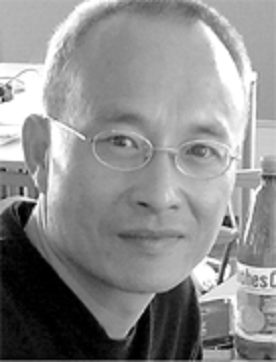Wang Lu was born in 1963 in Zhejiang, China, and entered the School of Architecture of Tsinghua University in Beijing in 1979, received the Master's degree of Architecture and began working as an assistant in the School of Architecture in Tsinghua University in 1987. Since 1991, he had pursued study in Hannover University in Germany and received the Ph.D. in 1997. Now he is professor at the School of Architecture in Tsinghua University, chief editor of World Architecture Magazine from 2000 to 2012. Besides the professorship in the university, he leads the architectural office "in+of architecture", doing planning and design practice in China. His works and projects are widely published at home and abroad by AV, Architectural Record, Bauwelt, Space and in books like: Made in China, New Architecture in China, Phaidon Atlas of 21st Contemporary Architecture, Collection of Asian Architecture, Atlas Global Architecture circa 2000 etc. He has given lectures at TU Berlin, ETH Zürich, TU Vienna, UNSW Sydney, CVUT in Prague, CHUK etc., and was invited as International Juror for the 2012 Audi Urban Future Initiative Award in Istanbul, 2008、2012 World Architecture Festival Awards (WAF) in Barcelona and Singapore, 2007、2009 Bauwelt Prize in Berlin, 2002 Marble Architectural Awards (MAA) in Carrara. He was also invited participating in many exhibitions in China and abroad, such as: "China contemporary" at NAI Rotterdam in 2006, curator for the Chinese Pavilion of the 1st international Architecture Triennial in Lisbon (TAL'07)in 2007, Hong Kong & Shenzhen Bi-city Biennale of Urbanism \ Architecture in 2008, “Rising East: New Chinese Architecture” at Vitra Design Museum in Germany in 2010, “China Architectural Landscape” at MAXXI Rome in 2011, Architecture and Art Biennale at Westbound Shanghai in 2013, The15th International Architecture Biennale Venice in 2016, “Towards a Critical Pragmatism: Contemporary Architecture in China” at GSD Harvard University in 2016, Curator, (with Krzysztof Ingarden) “Localized Modernism: Contemporary Chinese Architecture” at Manggha Museum Krakow in 2017.
WANG Lu
Tel: 86-10-62794171
Fax: 86-10-62770314
E-mail: wang_lu@tsinghua.edu.cn
Fax: 86-10-62770314
E-mail: wang_lu@tsinghua.edu.cn





